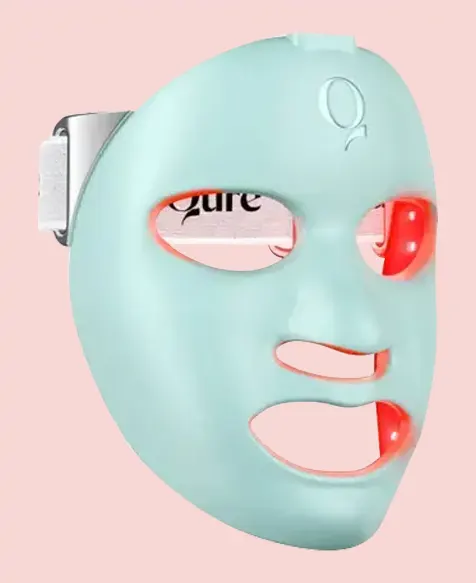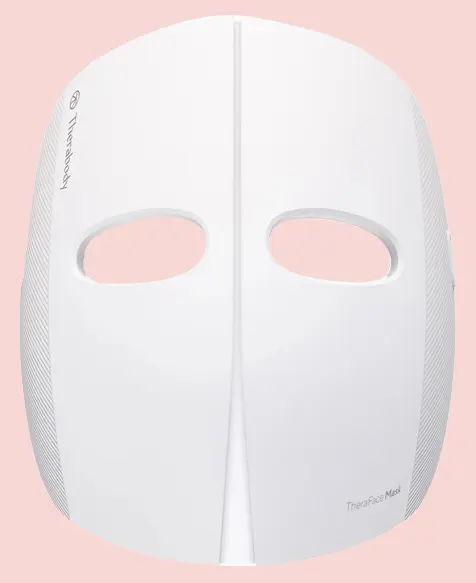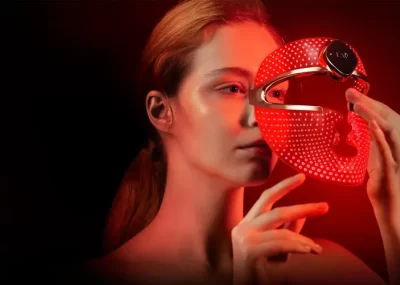Red light therapy opens up a realm of possibilities for healing and rejuvenation. This innovative approach, also known as phototherapy, taps into the power of light to work wonders on our bodies.
Among the spectrum of lights used, red light therapy stands out for its unique benefits, especially when it comes to mending scars. With each beam packed with healing energy, it promises a gentle yet effective way to support our skin’s natural recovery process.
This article sheds light on the science behind red light therapy, as we aim to equip you with knowledge of its healing mechanisms and how it can be integrated into your skincare routine.
Want to know how this works? Let’s discover how this radiant technology can be your ally in achieving smoother, more resilient skin.
What Are Scars And Why Do They Matter?
Scars are marks that appear on our skin after they heal from an injury, like a cut from a kitchen mishap or a scrape from a fun day out. They can also come as a result of skin conditions like acne, surgeries, or even quick growth spurts. But scars are more than just marks, they tell stories of our past adventures and challenges.
It’s fascinating to think about how our body works to heal these wounds. When we get hurt, our body jumps into action, repairing the damage and often leaving a scar as a sign of healing. This process is a testament to our resilience and ability to recover.
However, scars can also touch our lives in ways we might not expect. They can influence how we feel about our looks, which can affect our confidence and how we interact with others. Sometimes, scars can be a bit bothersome, causing discomfort like itchiness or pain, which is why finding ways to help scars heal better or become less noticeable can make a big difference in our daily lives.
With skincare and health, there are many ways to care for scars, from creams and gels to more advanced treatments such as using LED lights and lasers. Each has its own set of benefits, and it’s all about finding what works best for you.
What Is Red Light Therapy and Can It Help With Scar Healing?
Red light therapy is a treatment method that utilizes specific wavelengths of red and near-infrared light to promote healing in the body. This therapy has gained attention for its potential to help with scar healing. Studies such as those in Clinical Cosmetics and Investigational Dermatology[1] suggest that red light therapy can significantly improve the appearance and texture of scars over time.
By stimulating cellular processes and increasing blood flow, red light therapy[2] supports the body’s natural healing mechanisms. It’s a non-invasive and safe option that has shown promising results for various types of scars, including acne and post-surgery scars. Incorporating red light therapy into a scar treatment regimen may lead to noticeable improvements in scar visibility and overall skin health.
 How Red Light Therapy Works for Scars
How Red Light Therapy Works for ScarsHow Does Red Light Therapy Mask Work and Is It Effective For Scar Remodeling?
A red light therapy mask works by emitting specific wavelengths of red and near-infrared light[3] onto the skin. These wavelengths penetrate the skin’s surface and are absorbed by the cells, particularly the mitochondria[4], which are the powerhouses of the cells. When the cells absorb this light energy, it triggers a cascade of biochemical reactions.
One key effect is the stimulation of ATP (adenosine triphosphate)[5] production, which is essential for cellular energy. This increased energy production helps cells function more efficiently, aiding in the repair and regeneration of damaged tissue. Additionally, red light therapy boosts blood circulation, delivering more oxygen and nutrients to the skin, which further supports healing.
For scars, red light therapy can be beneficial due to its ability to enhance collagen production[6]. Collagen is a protein that forms the structure of the skin and is crucial for wound healing and scar remodeling. By promoting collagen synthesis, red light therapy can improve the appearance and texture of scars over time.
Exploring Other Benefits of Red Light Therapy in Skin Health
Red Light Therapy (RLT) emerges as a promising non-invasive treatment modality that significantly benefits and aids skin health management.
Here are some of the uses of Red Light Therapy in skin health:
1. Red Light Therapy for Acne Prevention:
Acne, characterized by the emergence of pimples, blackheads, and cysts, primarily results from the clogging of pores with oil and dead skin cells. Traditional treatments range from topical applications to oral medications, each with varying degrees of effectiveness and potential side effects. RLT presents a novel approach by targeting the underlying factors contributing to acne formation without the adverse effects associated with conventional treatments.
Mechanistically, RLT enhances cellular metabolism and blood circulation, which, in turn, can regulate sebum production, a key factor in acne development. Furthermore, it promotes anti-inflammatory responses and accelerates skin healing, thereby reducing the likelihood of pore-clogging and subsequent acne formation. Clinical studies like that in the Indian Journal of Dermatology[7] support these claims, showing that regular RLT sessions can lead to a significant decrease in acne lesions.
2. Red Light Therapy for Reducing Inflammation:
Inflammation is the skin’s natural response to injury or infection, manifesting as redness, swelling, and sometimes pain. Chronic inflammation, however, can exacerbate skin conditions and contribute to a cycle of damage. RLT’s ability to reduce inflammation is rooted in its capacity to enhance cellular repair mechanisms and increase the production of anti-inflammatory cytokines[8].
The therapy’s photobiomodulation effect promotes tissue repair and regeneration, thereby mitigating the inflammatory response. This not only aids in alleviating the symptoms associated with inflammation but also supports the skin’s integrity and barrier function. Clinical evidence in AIMS Biophysics[9] has demonstrated that RLT can effectively reduce inflammation markers, making it a valuable tool in managing inflammatory skin conditions.
3. Red Light Therapy for Promoting Wound Healing:
Wound healing is a complex biological process involving tissue repair and regeneration. LED and LASER therapies[10] have shown a profound impact on accelerating this process, thereby reducing recovery times and enhancing healing outcomes. The therapeutic effects of RLT on wound healing are attributed to its ability to stimulate cellular activities essential for tissue repair.
The application of RLT enhances collagen production, a critical protein in the skin’s structural framework, thereby facilitating the closure of wounds and minimizing scar formation. Moreover, RLT increases the activity of fibroblasts[11], cells responsible for producing the extracellular matrix and collagen, crucial for wound healing.
4. Red Light Therapy for Improving Skin Elasticity and Firmness:
Skin elasticity and firmness are indicators of healthy, youthful skin, reflecting the structural integrity of the dermal matrix. With aging, exposure to UV radiation, and other environmental factors, the skin’s elastic fibers degrade, leading to a loss of elasticity and firmness. RLT emerges as a non-invasive solution to counteract these changes by promoting the synthesis of collagen and elastin[12], the two pivotal proteins responsible for the skin’s elasticity and structural support.
RLT’s ability to penetrate the deeper layers of the skin and stimulate cellular regeneration results in the reinforcement of the skin’s supportive matrix. This leads to an improvement in skin elasticity and firmness, contributing to a more youthful and resilient skin appearance. Clinical evaluations in Photomedicine and Laser Surgery[13] support the efficacy of RLT in enhancing skin texture, firmness, and overall skin health, making it a valuable addition to anti-aging skincare regimens.
5. Red Light Therapy for Reducing the Appearance of Wrinkles and Fine Lines:
Wrinkles and fine lines are among the most visible signs of skin aging, primarily resulting from the breakdown of collagen and elastin fibers in the skin. RLT offers a promising approach to mitigating these signs of aging by stimulating the skin’s natural rejuvenation processes.
The therapy’s ability to enhance collagen synthesis plays a pivotal role in smoothing out wrinkles and fine lines, effectively restoring the skin’s youthful appearance.
RLT not only promotes collagen production but also improves skin hydration and circulation, further contributing to the reduction of wrinkles and enhancing skin plumpness.
How to Use Red Light Therapy Mask
Treating scars and wounds at home with Red Light Therapy (RLT) can be effective for your skin’s recovery journey.
Here’s how you can get started:
- Choose Your Device: Pick a red light therapy device designed for home use. There are many options, from handheld units to larger panels, so find one that suits your needs and budget.
- Read the Instructions: Every device comes with a manual. Take a moment to read it to understand how your specific model works and any safety advice.
- Prepare Your Skin: Clean up the area you’re going to treat. Make sure your skin is free from lotions, creams, or makeup to ensure the light penetrates effectively.
- Set Up Your Space: Find a comfortable spot where you can relax. You might be sitting or lying down for a bit, so get cozy!
- Time Your Sessions: Start with short sessions (about 1-3 minutes per area) and gradually increase based on your comfort and the device’s guidelines. Most devices recommend a daily session for the best results.
- Position the Device: Hold or place the device over the scar or wound, maintaining the distance recommended in your device’s manual. Ensure the light covers the entire area you’re treating.
- Relax and Treat: Turn on the device and relax while it works its magic. You might not feel anything, but that’s normal—RLT doesn’t heat up like a sunbath.
- Stay Consistent: Consistency is key. Keep up with your daily sessions to see improvements in your skin’s healing and appearance over time.
Frequently Asked Questions
What is Red Light Therapy (RLT) and how does it work?
A: Red Light Therapy uses low-wavelength red light to penetrate the skin, aiming to improve cellular function and promote healing. It’s believed to work by stimulating collagen production, reducing inflammation, and increasing blood circulation.
Can Red Light Therapy really help heal scars?
A: Yes, numerous studies suggest that RLT can significantly aid in the healing of various types of scars by enhancing tissue repair and reducing inflammation, leading to improved scar appearance and texture.
Is Red Light Therapy safe for all skin types?
A: RLT is generally considered safe for all skin types. However, it’s always recommended to start with shorter sessions and gradually increase the duration as your skin adapts to the treatment.
How often should I use Red Light Therapy on scars?
A: For best results, it’s typically recommended to use RLT on scars daily or every other day, with sessions ranging from a few minutes up to 20 minutes, depending on the device and the severity of the scars.
When can I expect to see results from using RLT on scars?
A: Results can vary, but many users start to notice improvements in scar appearance within a few weeks to months of consistent use.
Can I use Red Light Therapy on fresh wounds or surgical scars?
A: It’s essential to consult with a healthcare professional before using RLT on fresh wounds or surgical scars to ensure it’s appropriate and safe for your specific situation.
Are there any side effects of using Red Light Therapy on scars?
A: RLT is generally well-tolerated with minimal side effects. Some users may experience slight redness or irritation, but these symptoms typically subside quickly.
Can Red Light Therapy help with acne scars as well?
A: Yes, RLT can be beneficial for reducing the appearance of acne scars by promoting collagen production and reducing inflammation, helping to smooth out the skin’s texture.
Do I need a prescription to use Red Light Therapy for scars?
A: No, you don’t need a prescription for RLT devices intended for home use. However, consulting a healthcare professional before starting treatment is advisable, especially for severe or complicated scar cases.
Can Red Light Therapy completely remove scars?
A: While RLT can significantly improve the appearance and texture of scars, it may not completely remove them. The effectiveness of RLT can vary based on the type, age, and severity of the scars.
Conclusion
Red light therapy shows promising results in helping to heal scars. Its application on the skin and scar area can boost the body’s natural healing process, leading to smoother and less noticeable scars.
This therapy is backed by science and is a gentle, non-invasive option for those looking to improve their skin’s appearance. So, if you’re concerned about scars, red light therapy might be a beneficial solution to consider.













